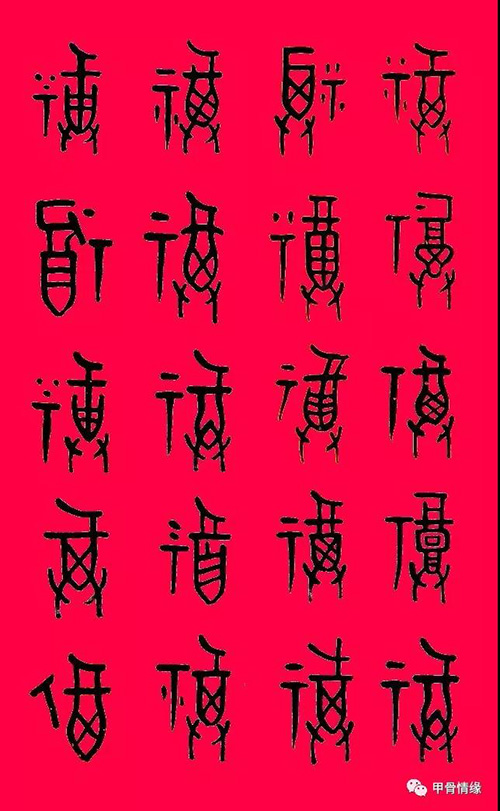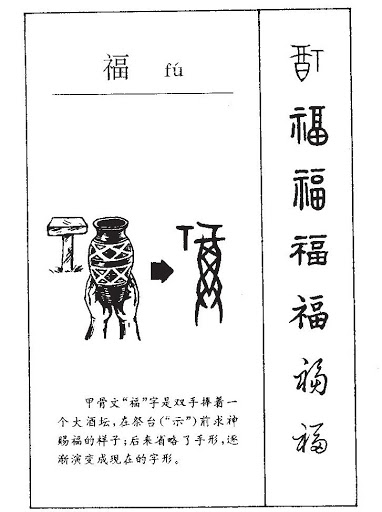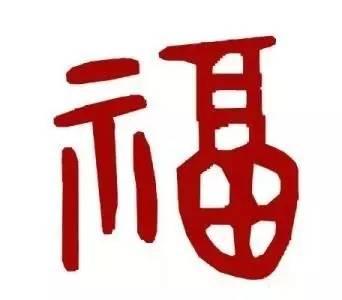Bible Truths in Chinese Characters?
Asher Chee |
The Chinese Character Truths theory suggests that Bible truths are encoded in some of the Chinese characters which we use today because the ancient Chinese people knew the God of the Bible and the Gospel of Jesus Christ. A classic example of the Chinese Character Truths theory can be found in the following explanation for the Chinese character 福 Fú:
The Chinese character Fú (福) means blessedness, riches, and success. But most are not aware of the wonderful message behind the character. It is made up of four Chinese characters which tell of the original blessedness of man with God: one (一) man (口) in the garden (田) with God (礻). Adam was that first man created to enjoy sweet fellowship with God in the Garden of Eden. This is the true meaning of blessedness.
This explanation is based on the current 福 Fú character. However, this assumes that the Chinese characters which we use today were invented by the ancient Chinese people. In reality, the current forms of Chinese characters were completely unknown to the earliest writers and readers of Chinese characters, since they were using the original form of Chinese characters, known as Oracle Bone Script (甲骨文).
Here are the various ways which the 福 Fú character was written in Oracle Bone Script:

None of the variants of the Oracle Bone Script 福 Fú character supports the Chinese Character Truths theory. Unlike the current 福 Fú character, the Oracle Bone Script 福 Fú character did not contain the elements 礻, 一, 口, and 田. This means that the original 福 Fú character did not contain elements which could signify “one”, “person”, “garden”, or “God”.
So then, what was the actual significance behind the appearance of the Oracle Bone Script 福 Fú character? Here is an explanation found in the entry for the 福 Fú character in a reference book, which presents the findings of Chinese archaeologists and historians:

甲骨文“福”字是双手捧着一个大酒坛,在祭台(“示”)前求神赐福的样子;后来省略了手形,逐渐演变成现在的字形。 — 《汉字字源》
The Oracle Bone Script 福 Fú character depicts two hands holding a large wine jug before an altar (示), asking God to grant blessing. Later on, it lost the hand shape, and gradually evolved into its current form. — The Origins of Chinese Characters.
According to this entry, the right part of the current 福 Fú character (畐) actually represented a jug in the Oracle Bone Script character, while the left part of the current 福 Fú character (礻) actually represented an offering altar in the Oracle Bone Script character.
Here is how the 福 Fú character was written later on in Chinese history, in Bronze Script (金文):

Even in Bronze Script, the 福 Fú character still retained the altar shape and the jug shape. This means that even at this point in Chinese history, the Chinese people still did not perceive that the 福 Fú character had separate elements which signified “one”, “person”, “garden”, and “God”.
It was only much later in Chinese history that the altar shape and the jug shape became separated and evolved into the elements 礻, 一, 口, and 田. This resulted in how the 福 Fú character is written today.
Conclusion
Therefore, contrary to the Chinese Character Truths theory, the 福 Fú character did not originally signify “one man in the garden with God”. Rather, the original 福 Fú character reflects that the ancient Chinese people believed that they had to bring an offering of wine to God in order to obtain blessing from him. That is hardly a Bible truth!
According to the Bible, true blessedness is that God gave up his Son, Jesus Christ, as a sacrifice for us so that we may be made right with him (Galatians 3:7–9).
{Special thanks to Wang Hualin for transcribing and translating the entry from the reference book.}

